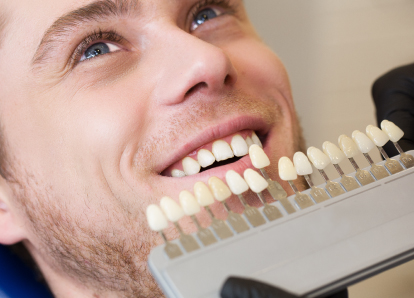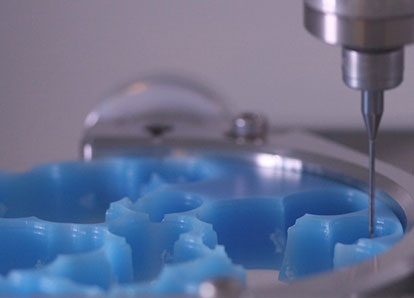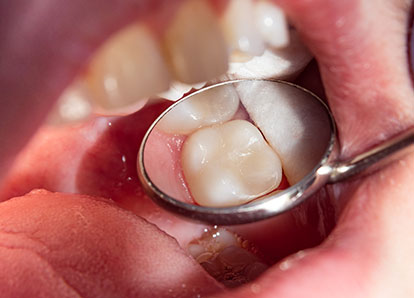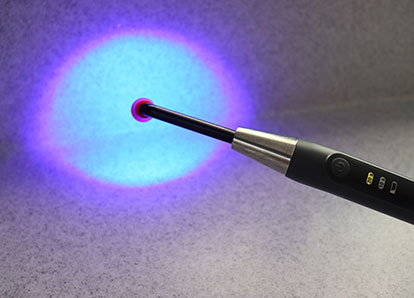COSMETIC & RESTORATIVE
What are bridges?
These are restorations that (as the name suggests) are ‘permanently’ bonded to teeth to ‘bridge’ the gap created by the loss of other teeth.
A bridge comprises of abutments and pontics (units)…
- Bridge abutments are the structures that sit on the supporting teeth (analogous to river banks)
- Bridge pontics are artificial teeth that are attached to the abutments (analogous to a walkway that extends between the river banks)
A tooth may be missing or extracted (leaving a gap) as a consequence of…
- Decay (a breakdown of the tooth surface and tissues by acids produced by bacteria)
- Trauma or fracture of the tooth
- Wear or tooth surface loss (from grinding, erosion, abrasion etc)
- Significant gum disease
- Devitalisation or death of a heavily filled or crowned tooth (because of the process of attempting to save it)
- Failed root canal treatment
- A developmental problem (congenitally absent, malaligned or malformed)
There are seemingly infinite permutations when considering the material combination and design of a bridge that is to be applied in a given context. Indeed, debate and research into the topic can consume the entire working lives of some restorative specialists.
If you decide you want a bridge to replace missing teeth, your dental surgeon should discuss with you the design options and materials that are available. The design should incorporate contingencies for loss or damage to those teeth that support the bridge.
The relief of discomfort that this procedure provides (and advances in treatment techniques and equipment) now mean that patients feel very comfortable choosing this as a positive method of attempting to keep a tooth that is otherwise compromised.
What is the procedure for having a bridge?
Bridges are custom fabricated especially for each individual patient and tooth. This is a collaborative effort by a dental surgeon and skilled laboratory technician.
The treatment usually involves 2 visits to the dentist (following diagnosis and planning), generally 2 weeks apart. (It may be necessary to place a filling and allow this to ‘settle’ before progressing to a bridge).
Visit 1 (around 90 mins in length)
- Your dentist will make you comfortable by anaesthetising the tooth / teeth to be prepared
- If you are having a tooth-coloured bridge, a ‘shade guide’ will be held to the teeth and photographs taken as a point of reference. This will ensure that the final bridge perfectly matches your adjacent teeth
- Moulds / impressions will be taken of the opposite jaw (as a reference for the laboratory technician) and also of the area to be prepared (for use in constructing a temporary bridge later)
- In some cases, it may be necessary to take further measurements to ensure a good understanding of how the upper and lower jaw close together (using a ‘facebow’)
- The supporting / abutment teeth will be shaped by the dentist to allow them to accept a bridge
- The bite (occlusion) will be checked to ensure that the tooth has been prepared correctly
- Moulds / impressions of the prepared tooth will be taken for the technician
- A temporary bridge will be placed and the bite (occlusion) will be checked again
Visit 2 (around 30 mins in length)
- Your dentist will make you comfortable by anaesthetising the area again
- The temporary bridge will be removed, and the area cleaned and dried
- The permanent bridge will be placed (without adhesive) and the fit and bite will be checked
- If all is satisfactory the bridge will then be permanently bonded in place
- The bite (occlusion) will be checked once again before you leave
What types of materials are available for a bridge and what is the difference?
| Advantages | Disadvantages | |
|---|---|---|
| Gold | – Corrosion resistant – Well tolerated by the body – Can be made to wear down at same rate as normal teeth – Less preparation of the tooth is needed leaving a strong structure – More durable than all other materials – Closer fit than other materials – Best longevity / service compared to other materials | – Expensive – Some people do not like the look of gold in their mouth |
| Porcelain on Metal | – Cosmetically acceptable – Generally, the least expensive | – More preparation of the tooth is needed than for gold, making the tooth weaker – May wear down the teeth that are biting against it – May chip or crack – May not fit and seal as well as gold on a microscopic level |
| Porcelain | – Cosmetically better than porcelain on metal | – More preparation of the tooth is needed than for gold, making the tooth weaker – May wear down the teeth that are biting against it – May chip or crack requiring removal and replacement – May not fit and seal as well as gold on a microscopic level – More expensive than porcelain on metal |
| Zirconia or Lithium Disilicate | – Cosmetically the best, producing the most life-like appearance – Less expensive than gold | – More preparation of the tooth is needed than for gold, making the tooth weaker – May wear down the teeth that are biting against it – May not fit and seal as well as gold on a microscopic level |
How long does a bridge last?
Most practices guarantee bridges for at least 1 year, but the minimum expectation is for a life span of 5 years. It is common to see that in favourable conditions a well-placed and maintained bridge can last many decades, if not a lifetime.
What are the advantages and disadvantages?
Advantages
- Greatly reduce the risk of tooth failure of weakened supporting teeth by encapsulating & ‘tying’ them together
- Improves cosmetic appearance
- Improves chewing function
- Is ‘permanently’ fixed in the mouth & cannot be removed like a denture
- Is less expensive & time consuming that having implants
Disadvantages
- Does not eliminate risk of tooth failure
- A ‘live’ tooth may later ‘die’ requiring more treatment or extraction (3% chance)
- Possible transient or permanent sensitivity in a few cases
- Expense (compared to living with a gap or having a denture)
- Fracture or chipping of the bridge material
- Adhesive failure in a few cases (can be re-bonded in favourable circumstances)
- Requires preparation of supporting teeth which may otherwise be healthy
CROWNS
What are crowns / caps?
These are restorations that (as the name suggests) are permanently fitted over the top of a tooth, generally covering it entirely. This is a very effective means of protecting and often dramatically improving the appearance of a tooth that has been compromised by:
- Decay (which should always be removed by a dentist and fixed with a filling first)
- A fracture or crack
- Wear or tooth surface loss (from grinding &/or erosion)
- Root canal treatment (which significantly weakens teeth)
What is the procedure for having a crown?
Crowns are custom fabricated especially for each individual patient and tooth. This is a collaborative effort by a dental surgeon and skilled laboratory technician.
The treatment usually involves 2 visits to the dentist, generally 2 weeks apart
Visit 1 (around 1 hour in length)
- Your dentist will make you comfortable by anaesthetising the tooth to be prepared
- If you are having a tooth-coloured crown, a ‘shade guide’ will be held to the teeth and photographs taken as a point of reference. This will ensure that the final crown perfectly matches your adjacent teeth
- Moulds / impressions will be taken of the opposite jaw (as a reference for the laboratory technician) and also of the tooth to be prepared (for use as a temporary crown later)
- The tooth will be shaped by the dentist to allow it to accept a crown
- The bite (occlusion) will be checked to ensure the tooth has been prepared correctly
- Moulds / impressions of the prepared tooth will be taken for the technician
- A temporary crown will be placed and the bite (occlusion) will be checked again
Visit 2 (around 30 mins in length)
- Your dentist will make you comfortable by anaesthetising the tooth
- The tooth will be cleaned and dried
- Your throat will be protected (to stop the crown accidentally being dropped down the back of your mouth and/or swallowed)
- The crown will be placed (without adhesive) and the fit and bite will be checked
- If all is satisfactory the crown will then be permanently bonded in place
- The bite (occlusion) will be checked once again before you leave
What types of crown are available and what is the difference?
| Advantages | Disadvantages | |
|---|---|---|
| Gold | – Corrosion resistant – Well tolerated by the body – Can be made to wear down at same rate as normal teeth – Less preparation of the tooth is needed leaving a strong structure – More durable than all other materials – Closer fit than other materials – Best longevity / service compared to other materials | – Expensive – Some people do not like the look of gold in their mouth |
| Porcelain on Metal | – Cosmetically acceptable – Generally, the least expensive | – More preparation of the tooth is needed than for gold, making the tooth weaker – May wear down the teeth that are biting against it – May chip or crack – May not fit and seal as well as gold on a microscopic level |
| Porcelain | – Cosmetically better than porcelain on metal | – More preparation of the tooth is needed than for gold, making the tooth weaker – May wear down the teeth that are biting against it – May chip or crack requiring removal and replacement – May not fit and seal as well as gold on a microscopic level – More expensive than porcelain on metal |
| Zirconia or Lithium Disilicate | – Cosmetically the best, producing the most life-like appearance – Less expensive than gold – Much more durable than gold | – More preparation of the tooth is needed than for gold, making the tooth weaker – May wear down the teeth that are biting against it – May not fit and seal as well as gold on a microscopic level |
Are crowns worth the expense and do they last?
Yes, the aim of a crown is to prevent the tooth from breaking necessitating extraction. It is often more expensive to lose a tooth and try and replace it with a bridge or implant, than to keep it. The theory and practice is supported by very many decades of evidence and research
How long does a crown last?
Most practices guarantee crowns for at least 1 year, but the minimum expectation is for a life span of 5 years. It is common to see that in favourable conditions a well-placed and maintained crown can last many decades, if not a lifetime.
Advantages
- Greatly reduce the risk of tooth failure
- Improves cosmetic appearance
- Retains the function of a tooth
- Reduces food packing between teeth
- Tooth can be saved rather than extracted
- Tooth presence preserves jaw shape
- Can save money compared to bridge etc
- Can reduce tooth wear in ‘grinders’
Disadvantages
- Does not eliminate risk of tooth failure
- A ‘live’ tooth may later ‘die’ requiring more treatment or extraction (3% chance)
- Possible transient or permanent sensitivity in a few cases
- Expense (compared to extraction)
- Fracture or chipping of porcelain
- Adhesive failure in a few cases (can be re-bonded in favourable circumstances)
FILLINGS
What are fillings?
A tooth can develop a defect which can be caused by…
- Decay (a breakdown of the tooth surface and tissues by acids produced by bacteria)
- A fracture or chip
- Wear or tooth surface loss (from grinding &/or erosion)
Fillings are most commonly placed where decay has been discovered. Untreated decay can continue to spread until it infects the nerve or the tooth breaks. Your dentist will remove the decay from the tooth and seal the resulting ‘hole’. This will reduce the risk of infection and fracture of the tooth as well as restoring its function and form. If a tooth is fractured, chipped or worn then a filling may be placed for similar reasons or to reduce sensitivity.
Tooth coloured filling materials can also be used on a healthy tooth to achieve a more pleasing shape or disguise a surface blemish.
The relief of discomfort that this procedure provides (and advances in treatment techniques and equipment) now mean that patients feel very comfortable choosing this as a positive method of attempting to keep a tooth that is otherwise compromised.
What is the procedure for having a filling?
The treatment usually involves 1 visits to the dentist (following diagnosis)
Single Visit (around 30 to 40 minutes in length)
- Your dentist will make you comfortable by anaesthetising the tooth to be prepared
- Your bite (occlusion) will be checked whilst the anaesthetic takes effect
- If you are having a tooth-coloured filling you will select a shade (together with the dentist) that matches the adjacent teeth
- A protective shield (rubber dam) may be placed around the tooth to prevent it being contaminated with saliva and bacteria from the mouth during preparation
- The tooth will be cleaned by removal of the decay and/or an old existing filling first, leaving a clean cavity
- A lining may be placed to protect the nerve and reduce sensitivity
- A band (matrix band) may be temporarily placed around the tooth to help form the shape of the new filling (a bit like a cake tin in baking)
- The filling will be placed in the prepared clean cavity and shaped to restore the normal anatomical features and conform to your bite (occlusion)
- Once all the preparatory paraphernalia has been removed from your mouth, the bite (occlusion) will be checked again to ensure that the tooth has been shaped correctly, before you leave
- A soft diet will be required for the next 24 hours
Types of filling material available
The table below outlines the most commonly used filling materials. New materials are being introduced onto the market all the time.
| General Constituents | Advantages | Disadvantages | |
|---|---|---|---|
| Metal Alloy (Amalgam) | – Ag+ – Cu2+ – Hg2+ – Sn4+ – Zn2+ | – Over 190 years of clinical evidence – Excellent strength in compression – Easy to place – Sets uniformly – Does not shrink on setting | – Not tooth-coloured – No direct bond to tooth tissue – Requires ‘retentive features’ to help hold the filling in place |
| Composite (Tooth-Coloured) | – BisGMA – Urethane Diacrylate – TEGDMA – Barium glass – Strontium glass – Colloidal Silica – Amines – Ketones – Silane coupler | – Tooth-coloured – More sparing of tooth tissue – Can bond directly to tooth tissues | – Greater likelihood of sensitivity – Only 3 decades of supportive evidence – Technique sensitive – Take longer to place – Poorer in compression than metal – Shrinks on setting – May not ‘set’ all the way through – Wear more quickly than metallic restorations |
| Glass Ionomer (Cream-coloured) | – SiO2 – AlF3 – CaF2 – NaF – AlPO4 – Polyacrylic Acid – HEMA | – Releases fluoride (which reduces the risk of decay) – Bonds to tooth tissue | – Poor cosmetically – Brittle – Wears easily – May require sealing with resin – Limited applications |
Tooth coloured fillings should be applied using strict moisture control / isolation (as contamination with saliva during placement will immediately compromise the bond or seal of the filling, rendering it ineffective from the outset).








